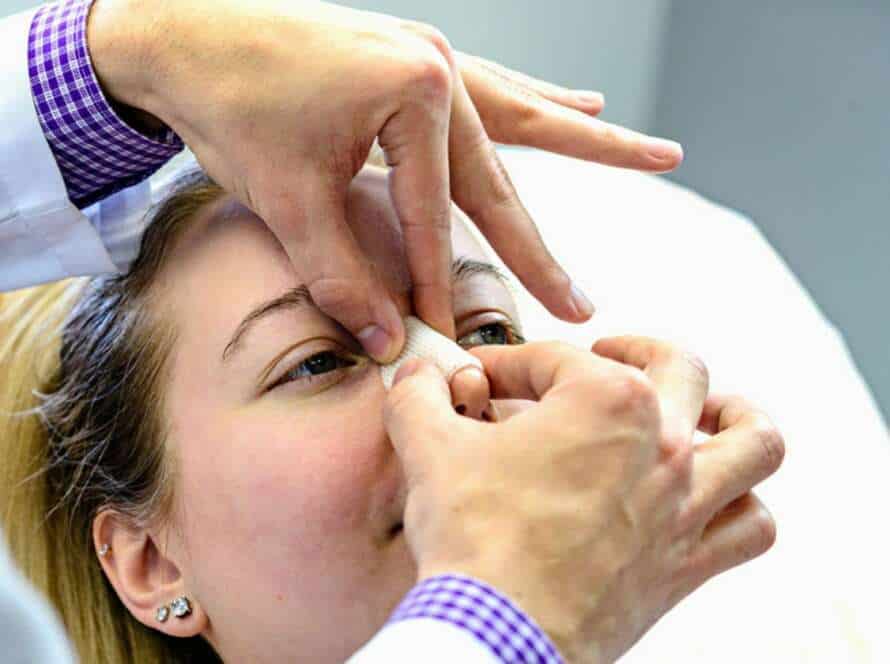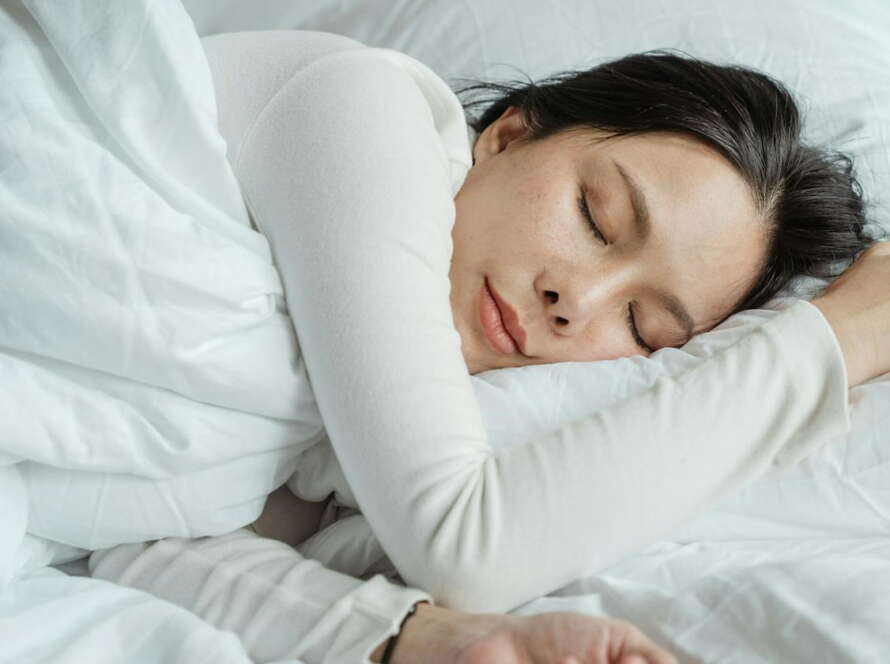This blog has been medically reviewed by Theresa Vuskovich, DMD.
All of us probably have some things that tend to torture our minds in the middle of the night. Perhaps you’re sweating a major work project that’s coming due, watching gas prices escalate nearly as fast as the meter in a downtown taxi during rush hour, or learning that your in-laws are coming for an extended visit.
We’ve certainly all experienced trying to fall asleep with something on our minds, only to wake up with a start a few hours later just to have all those same thoughts, doubts, and stressors immediately come rushing right back into our minds, making it extremely difficult to revisit golden slumbers. Next thing you know, a few hours have passed, and what you thought would be a full eight hours of sleep has been irretrievably downgraded, leaving you sluggish and tired the next day.
If such an occurrence happens only occasionally, then you can probably chalk it up to a bad night between the sheets. However, if you find this type of scenario happening with more and more frequency, then something more serious—like a sleep disorder—may be afoot.
Two of the most common sleep disorders are insomnia and sleep apnea. What’s the difference between sleep apnea and insomnia? Glad you asked: Let’s take a look.
Many Sleep Disorders to Go Around
Before delving into the differences between sleep apnea and insomnia, it’s worth recognizing just how common sleep disorders are. According to the Cleveland Clinic, around 70 million Americans suffer from a sleep disorder. On top of that, there are at least 80 different types of sleep disorders.
If you often find yourself tired during the day—even after sleeping for seven hours or more the night before—struggle to perform typical daily activities, or regularly experience sleeping difficulties at night, then you could be suffering from a sleeping disorder of some kind.
In addition to sleep apnea and insomnia, other common forms of sleep disorders include narcolepsy, restless leg syndrome, sleepwalking, REM sleep behavior disorder, shift work disorder, parasomnias, night terror, jet lag, and many others.
Symptoms Signaling Insomnia
While insomnia and sleep apnea are both disorders, there is one obvious difference: Insomnia is primarily a problem of being unable to get to sleep in the first place, an inability to stay asleep, or a tendency to wake up too early and not be able to get back to sleep. A main condition of sleep apnea, however, is being awakened from a sound sleep multiple times by an inability to breathe properly.
There are two types of insomnia: acute and chronic. Most adults experience acute insomnia at some point, which is typically caused by stress or a traumatic event and occurs over a period of several days or a few weeks. Chronic insomnia, however, persists for a month or longer. Its cause is often traced to underlying medical conditions or medications.
Symptoms of insomnia may include the following:
- Difficulty falling asleep at night
- Waking up during the night
- Waking up too early
- Not feeling well-rested after a night’s sleep
- Daytime tiredness or sleepiness
- Irritability, depression, or anxiety
- Difficulty paying attention, focusing on tasks, or remembering things
- Increased errors or accidents
- Ongoing worries about sleep
If you feel you might have insomnia, you should discuss the issue with your physician.
Primary Causes of Insomnia
Several things can trigger insomnia, including stress or changes to your typical life routine. The following are common causes of insomnia:
- Stress
- Travel or work schedule
- Eating too much late at night
- Poor sleep habits
- Medications
- Mental health disorders
- Medical conditions
- Sleep-related disorders
- Caffeine, nicotine, alcohol
Aging also plays a big role in increasing your risk for insomnia. Primary factors for this include natural changes in the following areas: sleep patterns, daily activity level, general health, and the use of more medications.
Symptoms of Sleep Apnea
Sleep apnea is a serious disorder in which your breathing suffers a series of stops and starts during the night. The most common type of sleep apnea is obstructive sleep apnea (or OSA), which occurs when throat muscles relax during sleep and block your airway.
Common symptoms of OSA include the following:
- Snoring
- Episodes of stopped breathing
- Waking up gasping for air
- Morning headache
- Awakening with a dry mouth
- Difficulty staying asleep
- Excessive daytime drowsiness
- Difficulty focusing or paying attention
- Irritability
If you experience any of those symptoms, it is essential to reach out to a medical professional for more information.
Complications and Risk Factors of Sleep Apnea
The serious nature of sleep apnea complications is nothing to yawn at. Sleep apnea is a serious medical condition that is associated with daytime fatigue, high blood pressure, heart problems, type 2 diabetes, liver problems, metabolic syndrome, additional complications with surgery and medications, and sleep-deprived partners.
The main risk factors for sleep apnea include obesity, neck circumference, a narrow airway, being male, being older, family history, nasal congestion, other medical conditions, and the use of alcohol, sedatives, or tranquilizers.
Determining Your Diagnosis
The first step in figuring out the root cause of any sleep-related issues you may be having is to check with your physician. If your symptoms lean toward sleep apnea, your doctor will most likely order an overnight stay for you at a sleep center where staff can monitor and test for exactly what is disrupting your sleep during the night. There also are at-home kits that can measure your heart rate, blood oxygen level, airflow, and breathing patterns, which all help identify sleep apnea.
Insomnia is typically diagnosed following a clinical interview with your doctor. It’s possible your doctor could still assign a sleep study just to rule out other underlying conditions, such as sleep apnea.
A lack of sleep is never good in the long run, and too many fitful nights will soon take a toll on everything you do during the day. Determining whether you have sleep apnea or insomnia and developing a plan to counter those risks and causes is an important first step to better sleep and improved health.
References
1. Oksenberg, A., Froom, P., & Melamed, S. (2006). Dry mouth upon awakening in obstructive sleep apnea. Journal of sleep research, 15(3), 317–320. doi:10.1111/j.1365-2869.2006.00527.x
2. Rundo J. V. (2019). Obstructive sleep apnea basics. Cleveland Clinic journal of medicine, 86(9 Suppl 1), 2–9. doi:10.3949/ccjm.86.s1.02
The statements made on this website are for educational purposes and include articles, educational materials, and research on various topics within the Sleep and Dental industries and are not the views of, or are in connection with Vivos Therapeutics and/or its regulated products. The statements are not intended to accompany any required product labeling for a regulated product. Neither are such statements intended to introduce a new indication, patient population, alter the directions for use, or otherwise change or supplement any required labeling for a regulated product.

